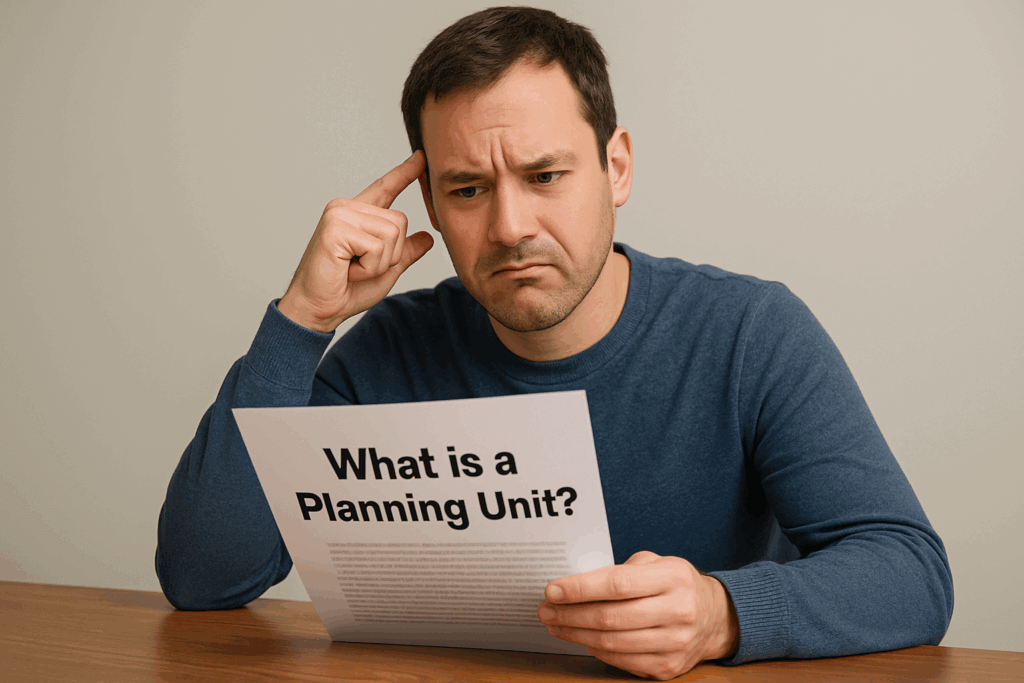What is a planning unit?
Essentially a planning unit is defined by historical occupation, boundaries and ownership. Over time, the larger planning unit is divided into smaller planning units, by new occupation, or planning permission creates a subdivision. A planning unit may also contain ancillary or incidental uses within it.
We will try to explain what a planning unit is and also ancillary vs incidental uses. However it is worth noting that different local authorities may differ in their description about what is an ancillary or incidental use. This only complicates matters.

The Planning Unit
In the judgement of Mr Justice Bridge in Burdle v Secretary of State for the Environment [1972] 3 All E.R. 240 it was held that the planning unit is usually the unit of occupation, unless a smaller area can be identified which, as a matter of fact and degree, is physically separate and distinct, and occupied for different and unrelated purposes. The concept of physical and functional separation is key, and Justice Bridge suggested 3 broad categories of distinction:
- Where it is possible to recognise a single main purpose of the occupier’s use of his land to which activities are incidental or ancillary, the whole unit of occupation should be considered the planning unit
- Even though the occupier carries on a variety of activities, and it is not possible to say that one is incidental or ancillary to another, the entire unit of occupation should be considered the planning unit, in mixed use
- Where there are 2 or more physically separate and distinct uses, occupied as a single unit but for substantially different and unrelated purposes, each area used for a different main purpose (together with its incidental and ancillary activities) ought to be considered a separate planning unit
Each planning unit will have a primary use. In the case of a dwelling house, the primary use will be the main dwellinghouse and any associated garden. It can also include one or more ancillary or incidental uses that do not alter the primary use of the land, providing they are closely linked and subservient to it. On a farm the primary use would be agriculture.
If a building is neither ancillary or incidental and doesn’t have planning, then it is likely to be unlawful and subject to enforcement. Although always remember that a former use of the building may well have been lawful, but it is what you use it for now that matters. Therefore the use can go from incidental, to ancillary to requiring planning very quickly.
Incidental Uses
For example a dwelling house with a detached garage would be an incidental use. One dictionary definition is: “Of a minor, casual, or subordinate nature”.
In the case of land, this is likely to be under say a farm ownership and the land is all used for agricultural purposes. If the farm, creates buildings which are used for used for storage for farm equipment these would be incidental uses and not separate planning units.
An incidental use is parasitic on the main use of the land or building – it cannot exist without it (e.g. an outside gym has to be used by the occupants of the dwellinghouse or a tractor shed is used by the workers on the farm). In a residential environment, an incidental use can contain an element of living accommodation usually found within an ancillary use as long as it is subordinate to or associated with the incidental use (e.g. a shower room to serve a gym or swimming pool).
Incidental uses might be a garage, storage. home office, gym, art studio, pool pump room, hobby room, cinema room, shed, pergola, decking etc. especially in a residential setting.
It is possible that any of these incidental uses, could be considered not to be incidental due to size and the fact that they are duplicating a use found within the main building. You can see how this can become very confusing, very easily and why some local authorities or planning officers or enforcement offers may differ in their opinion from others. Often we might suggest a certificate of lawfulness to confirm that the building and use is incidental. Planning Geek can assist you with this. Please complete the form here for a fee proposal.
An incidental use can easily become an ancillary use.
An incidental use remains part of the planning unit.
Ancillary Uses
A detached building that was then occupied as a granny annex would be an ancillary use but remains within the same planning unit and therefore Use Class C3. Note that it ought to exist first as an incidental use and then become ancillary.
Ancillary uses would Include uses which are duplication of an existing use – a granny annexe is likely to be be ancillary as it will contain elements seen in the main house. When this ancillary use then becomes a separate dwelling via a use which no longer requires use of the house and is self-contained, this could well be considered a separate planning unit (if it was lawful).
Staff accommodation in a separate building would also be deemed to be ancillary.
Often ancillary uses may require planning permission to exist, especially if they are constructed purely for the ancillary use. But this is down to how the local authority will determine the difference. Where a granny annexe occupier needs facilities within the main dwelling, this may well be acceptable to the local authority, as they will not consider this a self-contained dwelling.
Note that the building may well be lawful through time, but if the use changes to an ancillary one, then it is the use that requires planning permission and not the building per se.
An ancillary use remains part of the planning unit.
New Planning Units
Once land or buildings are divided off to provide two or more physically separate and distinct uses for differing purposes, this may well be considered a separate planning unit. Note that this would usually involve a change of use of the land or buildings and would therefore require planning permission unless it was a permitted development right.
Examples of creating a separate planning unit, might include division of a commercial unit, or selling off land to a new farmer to operate their own separate business, or getting planning to build a new house on part of the garden. Note that the same ownership does not prevent two or more planning units – it is what happens within land and buildings that count.
So a farmer, who sets up an equestrian school (subject to planning) may well have created a separate plannign unit as this would be considered a substantially different and unrelated purpose.
Page Updated: 26th May 2025
Other Common Projects
Many more projects to come....



